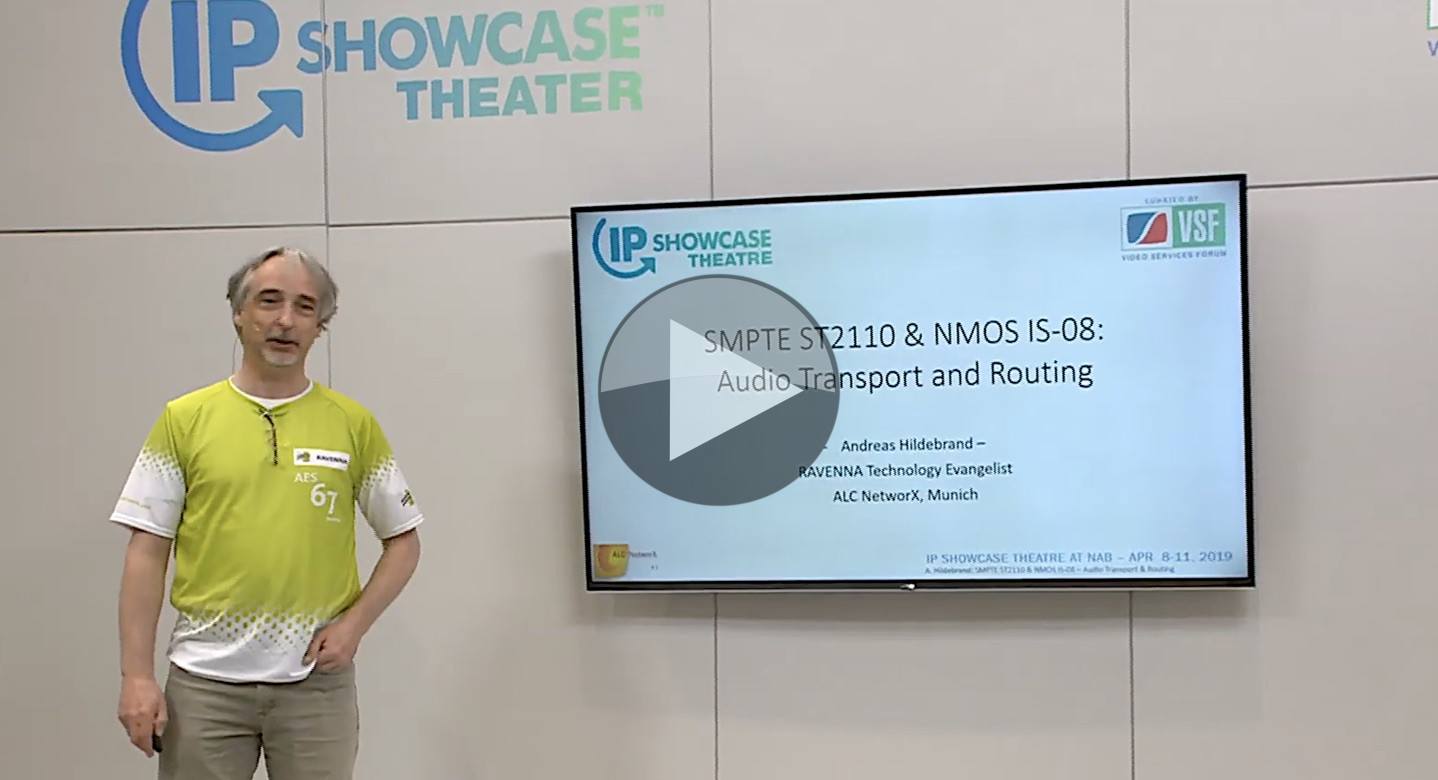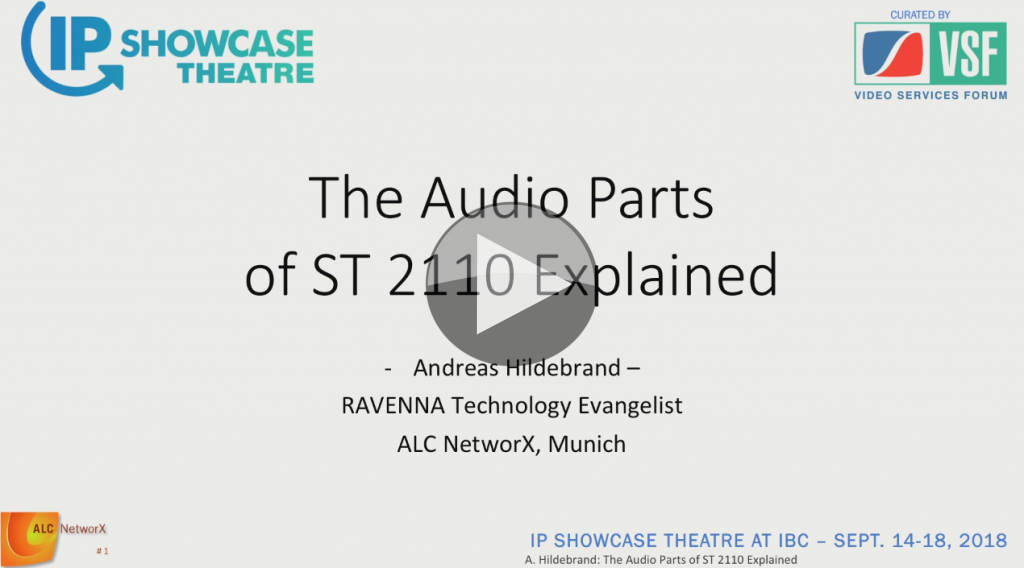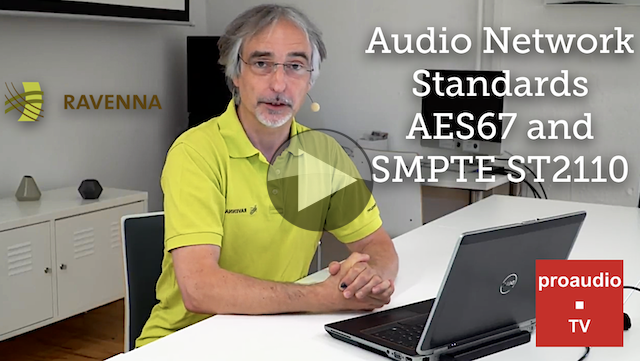Andreas Hildebrand starts by introducing 2110 and how it works in terms of sending the essences separately using multicast IP. This talk focusses on the ability of audio-only devices to subscribe to the audio streams without needing the video streams. Andreas then goes on to introduce AES67 which is a standard defining interoperability for audio defining timing, session description, encoding, QOS, transport and much more. Of all the things which are defined in AES67, discovery was deliberately not included and Andreas explains why.
Within SMPTE 2110, there are constraints added to AES67 under the sub-standard 2110-30. The different categories A, B and C (and their X counterparts) are explained in terms how how many audios are defined and the sample lengths with their implications detailed.
As for discovery and other aspects of creating a working system, Andreas looks towards AMWA’s NMOS suite summarising the specifications for Discovery & Registration, Connection Management, Network Control, Event & Tally, Audio Channel Mapping. It’s the latter which is the focus of the last part of this talk.
IS-08 defines a way of defining input and output blocks allowing a channel mapping to be defined. Using IS-05, we can determine which source stream should connect to which destination device. Then IS-08 gives the capability to determine which of the audios within this stream can be mapped to the output(s) of the receiving device and on top of this allows mapping from multiple received streams into the output(s) of one device. The talk then finishes with a deeper look at this process including where example code can be found.
Speaker
 |
Andreas Hildebrand Senior Product Manager, ALC NetworX |








